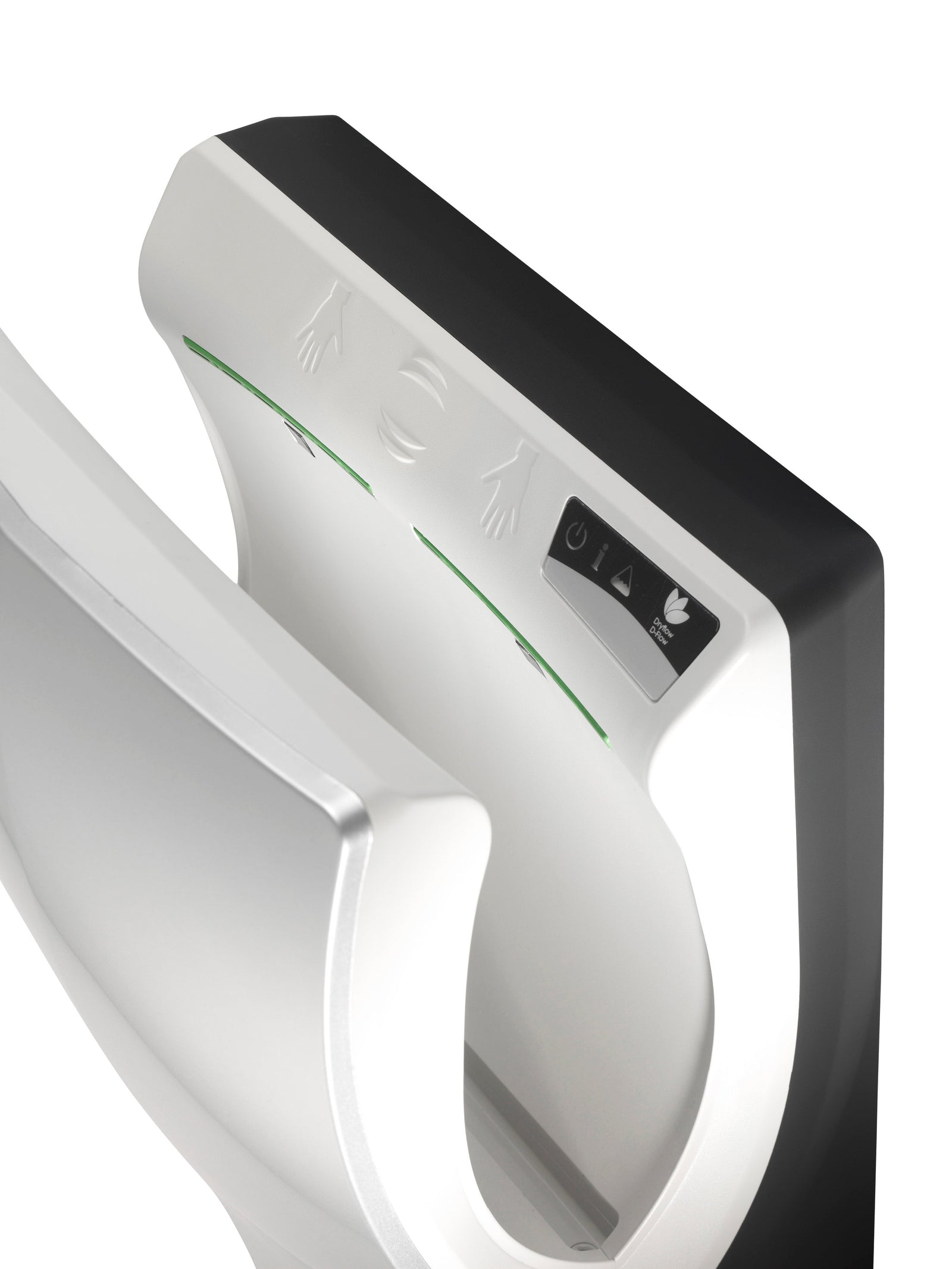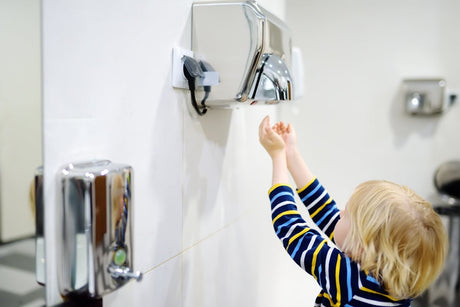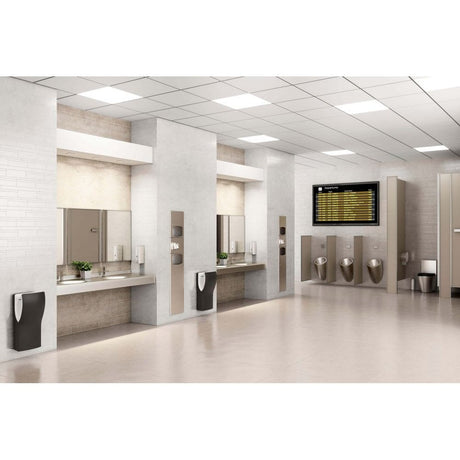We often hear of Jet Hand Dryers and Hot air hand dryers but what is the difference?
Jet Hand Dryers typically refer to models that have very high-powered motors, typically 18,000 rpm or above and compress the airflow through a smaller space to provide a much firmer and more concentrated airflow. These types of dryers tend to rely on stripping the water from the hands rather than evaporating it and dry considerably quicker. Dry times would vary from 10 to 20 seconds and models would have a maximum rated power of 1.6kw and a minimum of 0.18kw. Examples include Dyson, Airforce, Xlerator eco, Mitsubishi Jet Towel.
Hot air hand dryers generally refer to dryers that rely on more gentle airflow and heat. Hot air dryers were invented over 60 years ago and their designs remained fairly constant. Motors are typically 2500 to 6000 rpm and pass the airflow over a high-powered heater element. These types of dryers consume anything from 1.5kw to 2.6kw and have 30 to 45 second dry times.
More recently it has been recognised that a combination of the two types of dryer may actually deliver a more user-friendly experience, so many hand dryer models now combine the two approaches but still operate using much less energy. Examples include the G-Force mark II, Turboforce and Ecoforce.
Below is a summary of the benefits of each type:
.jpg)
Temperature controlled models
There are hand dryer models which sense the air temperature and adjust the amount of heat produced accordingly, these are ok on hands in hand dryers but we are not so keen on this technology for hands under dryers where heated airflow feels much more comfortable. Examples are:
- Stealthforce
- Jetforce
- Turboforce Junior PLUS
- Mediflow
Enhanced speed hot air dryers
These are hand dryers that have increased speed motors (around 7500 to 10000 rpm) and lower energy heater elements. These are fixed machines with no adjustability but provide a great compromise between speed, noise, comfort, energy efficiency and life span. In fact as the motors aren't turning so quickly they provide the longest life motors in the industry. Typically these machines range from 1kw to 1.8kw. Examples are:
Adjustable Hand Dryers
In our opinion models that offer the flexibility to manually adjust motor speeds or switch the heat on and off are the best option as you can adapt noise settings and energy use accordingly to different parts of the building. i.e. a high traffic area in constant use can have the heater element turned off as there is residual heat coming off the motor, where as other areas might need the noise reducing and more heat as they are not used often. Example models were mentioned earlier.





